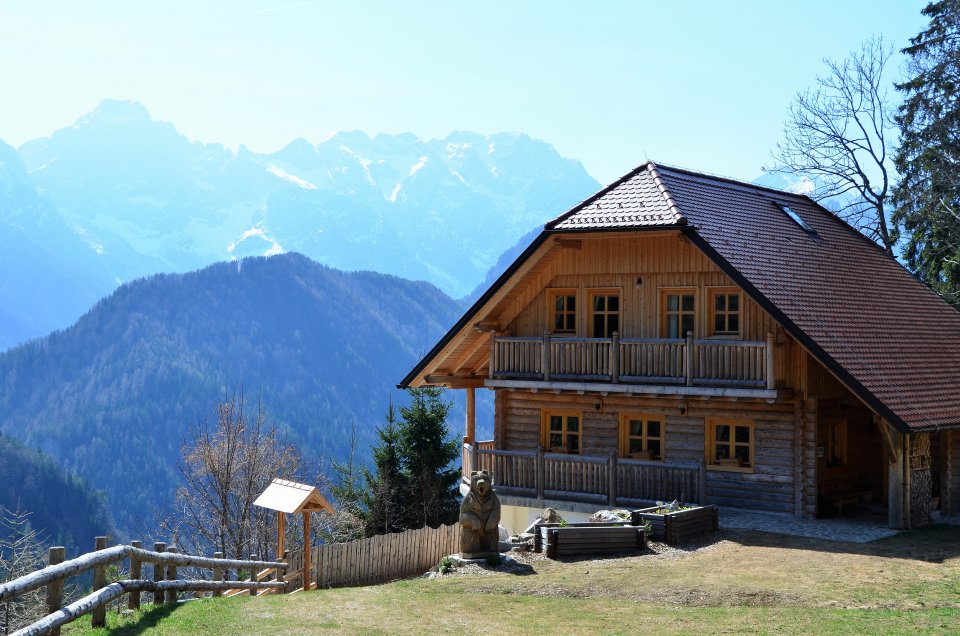
This case study focuses on two municipalities (Solčava and Luče) in northern Slovenia; representing 21,300 ha and 2,000 inhabitants. These are small municipalities, located in narrow alpine valleys with large, scattered, secluded farms and large forest estates. Utilised agricultural area is almost exclusively alpine meadows. Forests are the main traditional source of farm income and capital for investments; the majority of the wood today is sold as roundwood to wholesalers; there is no other notable industry. It is an attractive tourist destination.
Maintaining traditional permanent grasslands and preventing overgrowth is mainly based on extensive grazing with autochthonous breeds. Potential for adding value to autochthonous breeds remains largely untapped, mainly due to lack of local slaughterhouses.
34 case studies were planned by the H2020 PEGASUS project in different farming and forest systems and along the supply chain in 10 EU countries, to:
- examine the issues faced in ensuring effective provision of public goods/ecosystem services from farming & forest activities; and
- find solutions to enable the economic social and environmental sustainability of the EU’s farmed & forest areas.
This case focuses on improving rural vitality and the socioeconomic position of the local population through improving the market valorisation of locally sourced meat from traditional breeds and mountain wood with the establishment of value chains. The sustainable practices traditionally used here have contributed to the preservation of permanent alpine grassland and forest habitats and traditional breeds, which constitute both important genetic resources and cultural landscape.
- Inhabitants are finding it increasingly difficult to stay competitive (EU market) and are adapting to the new situation with extensification, downscaling and increased direct sales, in particular through tourist services.
- Market demand for environmental and social benefits comes mainly from tourists.
- The local setting is not particularly responsive to changes in policy and even less to the market environment.
- Governance and policy support: National legislation tends to be insensitive to local particularities. Discrepancies between demands coming from the EU level and the local reality are even bigger. This might be solved by devolving some of the decision-making powers to lower levels of administration.
- Enabling actors: private companies; new associations; the strongest agri-food actor in the LAG, cooperative Šaleška dolina z.o.o., is successfully developing a brand of organic beef produce and searching for new local suppliers. A similar approach (full traceability of produce, innovative approaches to marketing and distribution) could also be successfully applied to the Jezersko-Solčava lamb.
- Favourable market demand trends for mountain wood and traditional livestock products, as quality products with certified origin.
- External actors - Ljubljana university and the Forest service - provided the impulse needed for local actors to organise their collective action.
- Awareness of the need to establish a separate value chain for these products.
- Ideas about how to develop the certification initiative attracted the interest of key individuals.
- Cooperation, commitment and communication emerged as three key success factors.
Barriers include strong individualism, lack of interest for collective action, risk aversion, lack of trust, and lack of coherent marketing strategy. Value chains are weak, primary producers especially are struggling, due to competitive pressures and poor performances of local downstream industries.
For meat, the CAP causes financial dependency reducing incentives for change and strict controls on hygiene/animal welfare standards are an obstacle for small producers. For wood, there is a knowledge gap regarding wood properties and lack of experience in establishing a certification system in the wood processing sector.
- Collective action is decisive: concerted marketing approach is needed to improve visibility of the area
- There is a strong effort of the local governance to create favourable conditions to develop the municipalities’ competitive advantages (e.g. through the municipality Centre Rinka).
- Policy measures should encourage producers to find effective forms of cooperation, or other ways of increasing visibility and competitiveness.
- Recommendations for decision-makers: how to better exploit RDP measures for cooperation/collective actions; at the national level, the adequacy of some requirements of the agro-ecological compensation payments should be reassessed.
